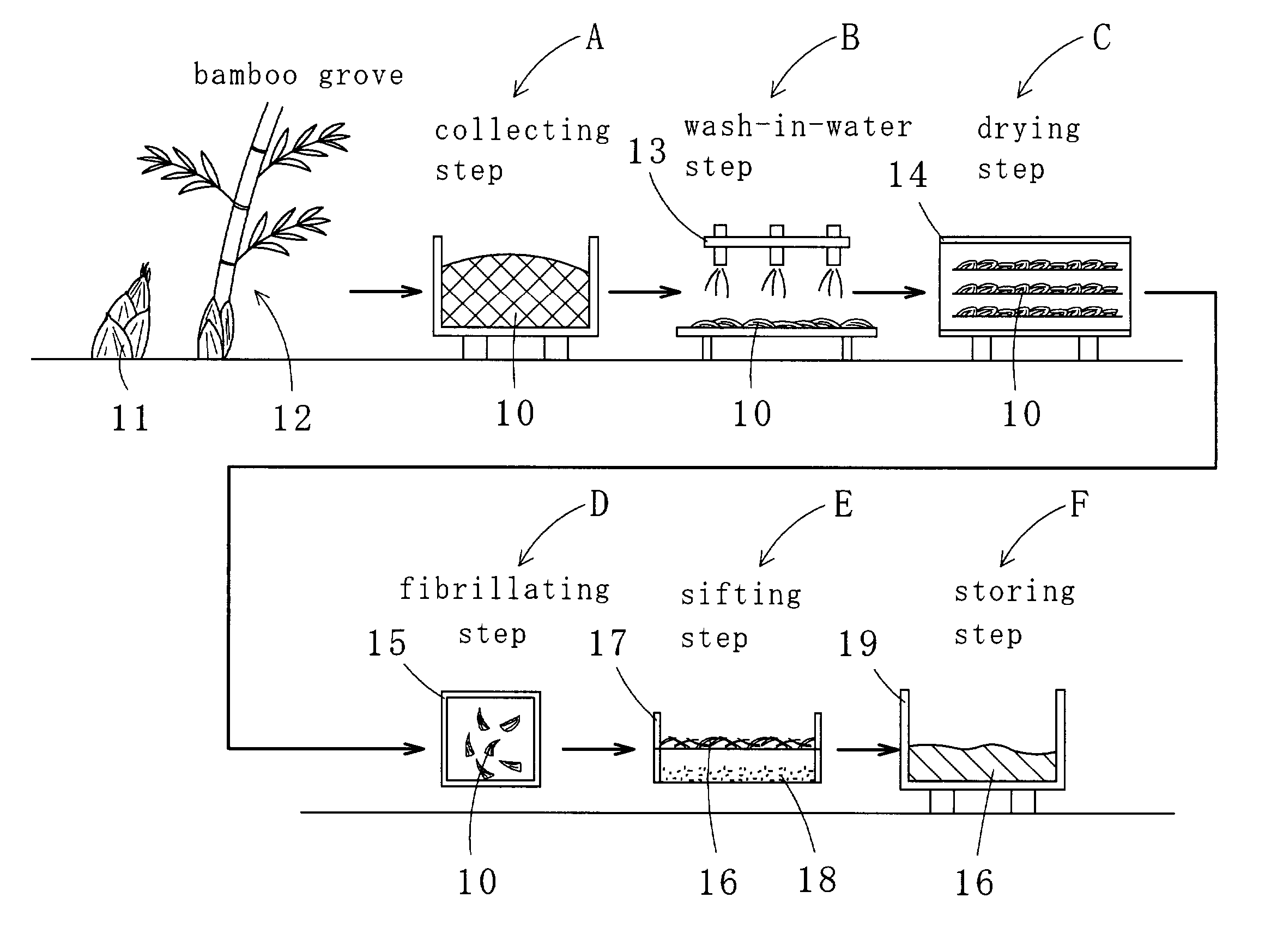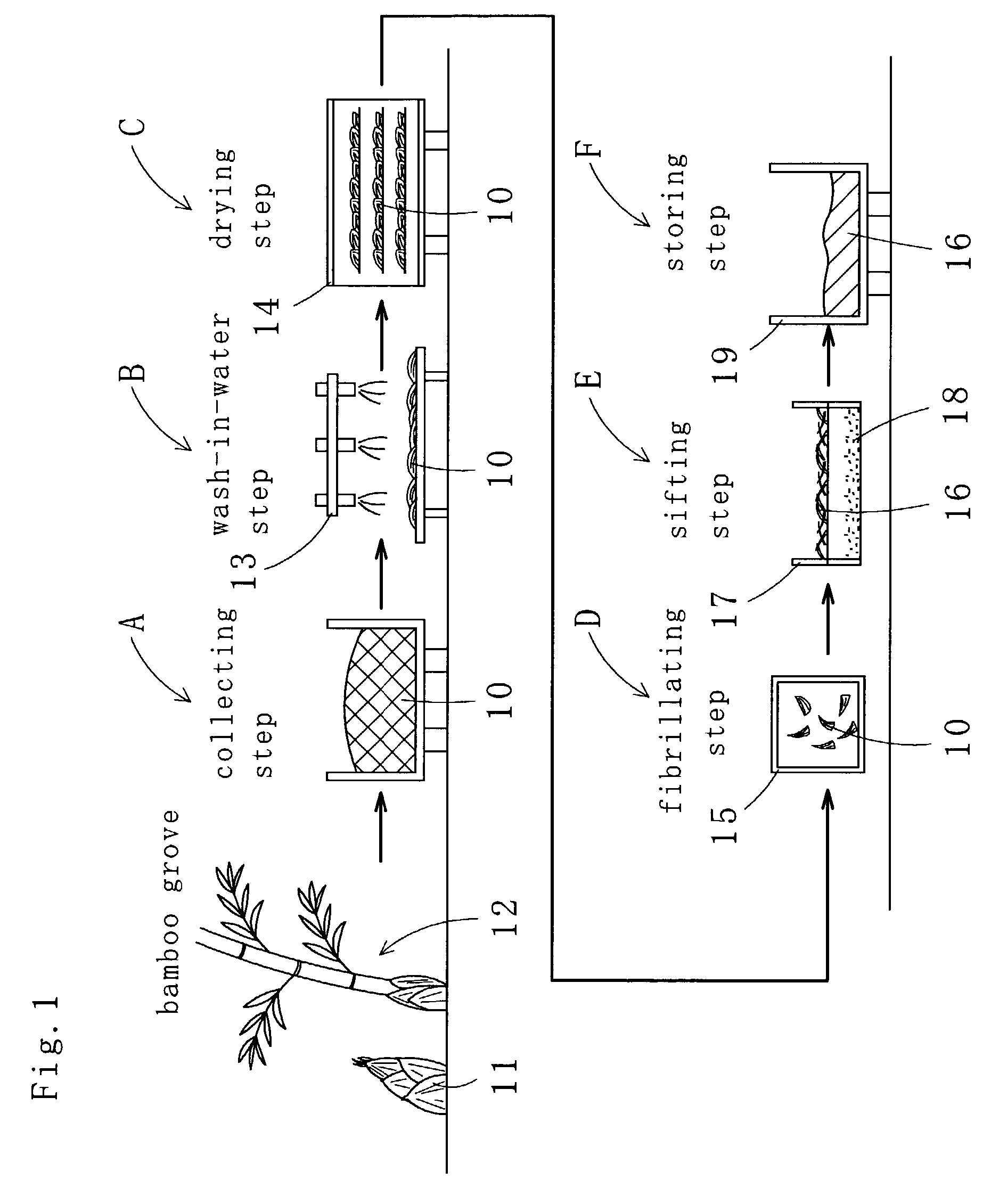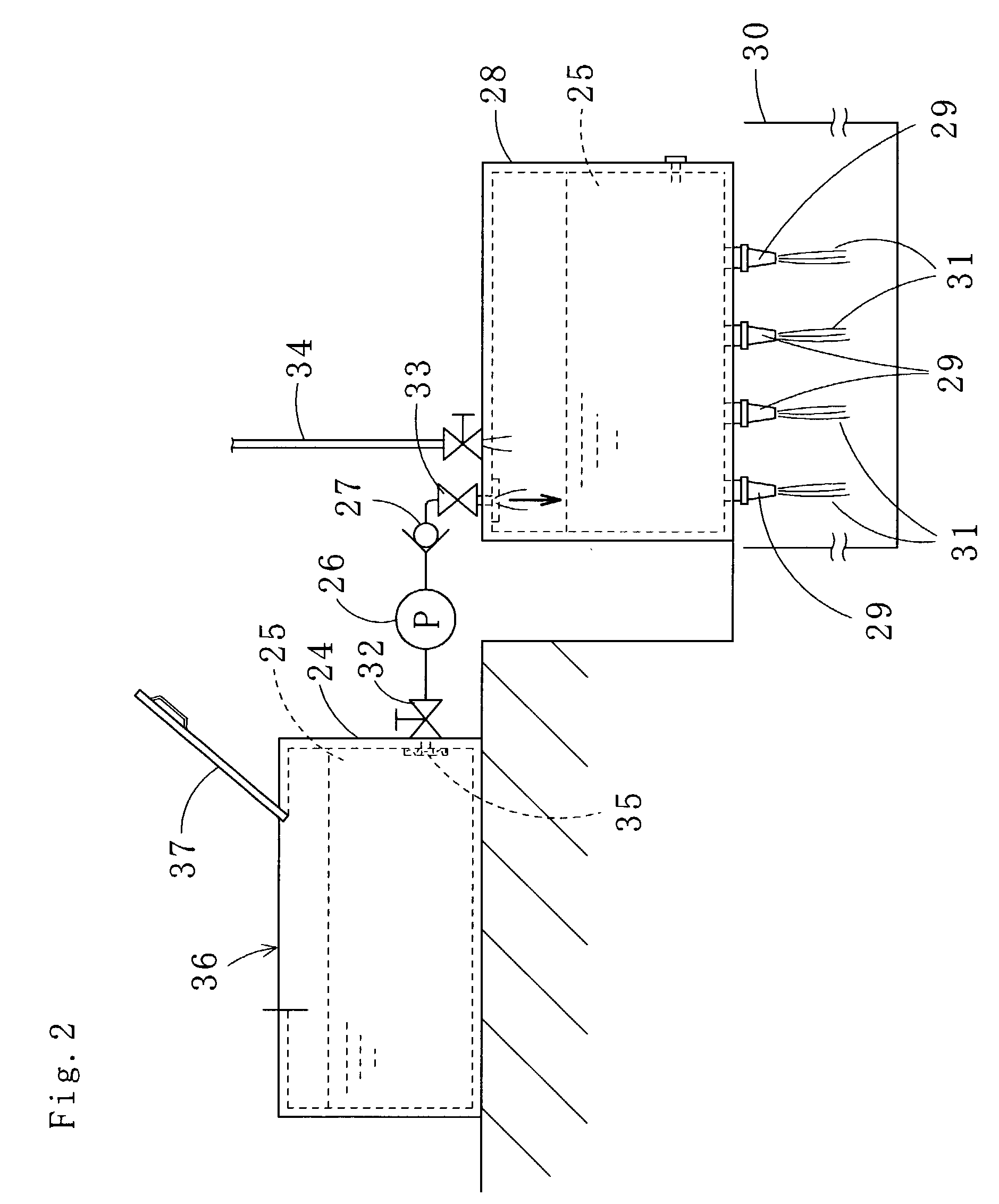Yam and cloths made mainly from bamboo sheaths and methods for manufacturing the same
a technology of bamboo sheaths and cloths, which is applied in the field of yarn to achieve the effects of strong yarn, graceful and subdued luster, and small decrease in the polymerization degree of cellulose molecules
- Summary
- Abstract
- Description
- Claims
- Application Information
AI Technical Summary
Benefits of technology
Problems solved by technology
Method used
Image
Examples
Embodiment Construction
[0023]Next, a preferred embodiment of the present invention will be described hereunder with reference to the accompanying drawings for the present invention to be understood.
[0024]As shown in FIG. 1, manufacture of bamboo fiber 16 to be a main raw material for yarn made by utilizing bamboo sheaths according to a first embodiment of the present invention starts with using sheaths of a bamboo shoot 11 and sheaths generated at a root of a bamboo 12 as bamboo sheaths 10 for a raw material. Accordingly, the manufacture starts from collecting step A where the bamboo sheaths are collected from such as bamboo groves, vegetable markets, and fruit and vegetable shops. Further, types of the bamboo from which the bamboo sheaths 10 are obtained are not limited specifically, however, Phyllostachys bambusoides, Phyllostachys pubescens, Phyllostachys nigra var. henonis, Phyllostachys nigra, Pseudosasa japonica, Pleioblastus simonii and the like are preferably used. In this embodiment, the bamboo s...
PUM
| Property | Measurement | Unit |
|---|---|---|
| temperature | aaaaa | aaaaa |
| length | aaaaa | aaaaa |
| thickness | aaaaa | aaaaa |
Abstract
Description
Claims
Application Information
 Login to View More
Login to View More - R&D
- Intellectual Property
- Life Sciences
- Materials
- Tech Scout
- Unparalleled Data Quality
- Higher Quality Content
- 60% Fewer Hallucinations
Browse by: Latest US Patents, China's latest patents, Technical Efficacy Thesaurus, Application Domain, Technology Topic, Popular Technical Reports.
© 2025 PatSnap. All rights reserved.Legal|Privacy policy|Modern Slavery Act Transparency Statement|Sitemap|About US| Contact US: help@patsnap.com



